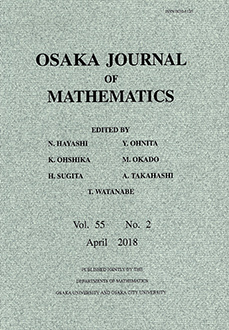Abstract
In this paper, we continue our study of the pro-$\Sigma$ fundamental groups of configuration spaces associated to a hyperbolic curve, where $\Sigma$ is either the set of all prime numbers or a set consisting of a single prime number, begun in an earlier paper. Our main result may be regarded either as a combinatorial, partially bijective generalization of an injectivity theorem due to Matsumoto or as a generalization to arbitrary hyperbolic curves of injectivity and bijectivity results for genus zero curves due to Nakamura and Harbater--Schneps. More precisely, we show that if one restricts one's attention to outer automorphisms of such a pro-$\Sigma$ fundamental group of the configuration space associated to a(n) affine (respectively, proper) hyperbolic curve which are compatible with certain ``fiber subgroups'' (i.e., groups that arise as kernels of the various natural projections of a configuration space to lower-dimensional configuration spaces) as well as with certain cuspidal inertia subgroups, then, as one lowers the dimension of the configuration space under consideration from $n+1$ to $n \ge 1$ (respectively, $n \ge 2$), there is a natural injection between the resulting groups of such outer automorphisms, which is a bijection if $n \ge 4$. The key tool in the proof is a combinatorial version of the Grothendieck conjecture proven in an earlier paper by the author, which we apply to construct certain canonical sections.
Citation
Shinichi Mochizuki. "On the combinatorial cuspidalization of hyperbolic curves." Osaka J. Math. 47 (3) 651 - 715, September 2010.
Information





